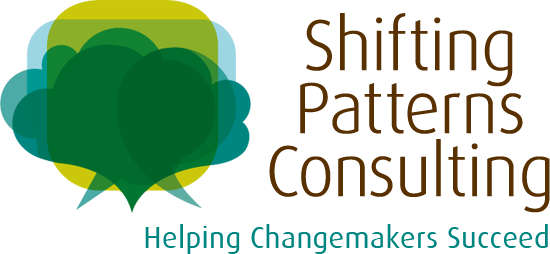Networking is an important part of my work as a consultant, which often includes attending or speaking at events in the social enterprise community. As is typically the case, the question: “What do you do?” appears early in the conversation. My answer to this question has changed based on what I’ve learned working with changemakers. I used to tell people that one of my roles is helping social enterprises, which solve social problems by building or transforming social institutions in ways that benefit people, obtain funding. I’ve realized that this response does not serve the best interests of my clients nor does it fully represent the value of my work.
While money is the lifeblood of any organization, there are other factors that also contribute to success. At the end of the day, money doesn’t do much good if the people and work processes are not in place to make the best use of these funds. This is what motivates my work and is the reason why I’m a strong proponent of building organizations that not only have sufficient resources for achieving their goals, but also the systems and skills to deploy them effectively. If social enterprises can benefit from diversifying sources of income, building high performing teams, and developing strategic partnerships why isn’t this happening consistently?
It’s hard to get what you don’t ask for
In my experience with changemakers investing in organizational capacity tends to be an afterthought if it’s even thought of at all. There are a variety of reasons for this situation, which are not intended to disparage changemakers or discount the difficulty of changing behaviors as part of the widespread adoption of social innovations while generating an income. These reasons include a passionate commitment to a particular cause that preoccupies the attention of changemakers, pressure from funders to demonstrate results as soon as possible, and bootstrapping until sufficient resources can be obtained.
To address this situation there is a need for greater awareness among changemakers about giving as much attention to how the organization is operating as to the work it is doing. However, awareness needs to be followed up by action, such as allocating time each week to focus on strategic, talent, or operational issues. Action is more likely to take place if there is commitment and support for following through. Changemakers can be supported in prioritizing institutional strengthening by increasing access to funding and other resources. This could involve educating funders about the importance of investing in the organization and not just its mission. Changemakers can also enlist a staff member, trusted advisor, or consultant to support them in improving organizational performance.
Limited support available to changemakers
Despite the conventional wisdom that organizations that invest in developing a robust infrastructure are more likely to succeed and recognition of financial support for capacity building as a philanthropic best practice by Grantmakers for Effective Organizations, social impact funders have yet to collectively make a substantial financial commitment to building organizational capacity. In an article published by Stanford Social Innovation Review, Paul Brest, former president of the William and Flora Hewlett Foundation, stated: “Although the interest in social entrepreneurship has grown, the sector is still lacking in patient capital to build, sustain, and grow promising nonprofits.” This may stem from a desire to invest in strengthening the operations of social enterprises that funders know well and are comfortable working with, particularly after they have demonstrated results. However, this can deprive organizations that are just starting out of an opportunity to produce the kind of results that funders look for. In weighing the opportunities and risks of funding it may also be helpful to also consider the quality of the idea and leadership as well as the potential for success.
In cases where technical support is combined with funding, there is a tendency to support social enterprises in operating like a business, such as developing a business plan or preparing pitches to investors. In some instances, an arrangement is made with a large consulting firm to provide pro bono consulting, which tends to be limited in terms of resources and scope, or a capacity building grant is awarded with the expectation that the recipient will hire a consultant for a short-term project. To have maximum impact, capacity building should extend beyond leaders and specific tasks to encompass the entire organization.
Hired hand vs. capacity development partner
Unfortunately, some consultants are contributing to an unflattering image of the industry, which can make it harder to win the trust of social enterprises that are able to invest in institutional strengthening when they treat clients as a problem to be solved. This typically involves “diagnosing” a client to find out who or what the problem is and then “prescribing” a solution, typically in the form of a report, that the client is often left to implement on their own.
There is also a tendency among consultants to be used as hired help to carry out tasks for clients that don’t have the expertise or time to address on their own. While this can save time and money in the short run it ultimately does a dis-service when clients are not supported in developing the expertise to address their own needs. It also perpetuates reliance on outside support, which is inconsistent with changemaker efforts to create an empowering environment in the communities where they work.
My intent here is not to criticize social enterprises, social impact funders, and consultants. It is to make the point that investing in organizational capacity is not “nice to have” when the situation permits, but a “must have” if we are to sustain social innovations and the organizations that are driving them.
This post was published by CSRwire on February 5, 2015.








